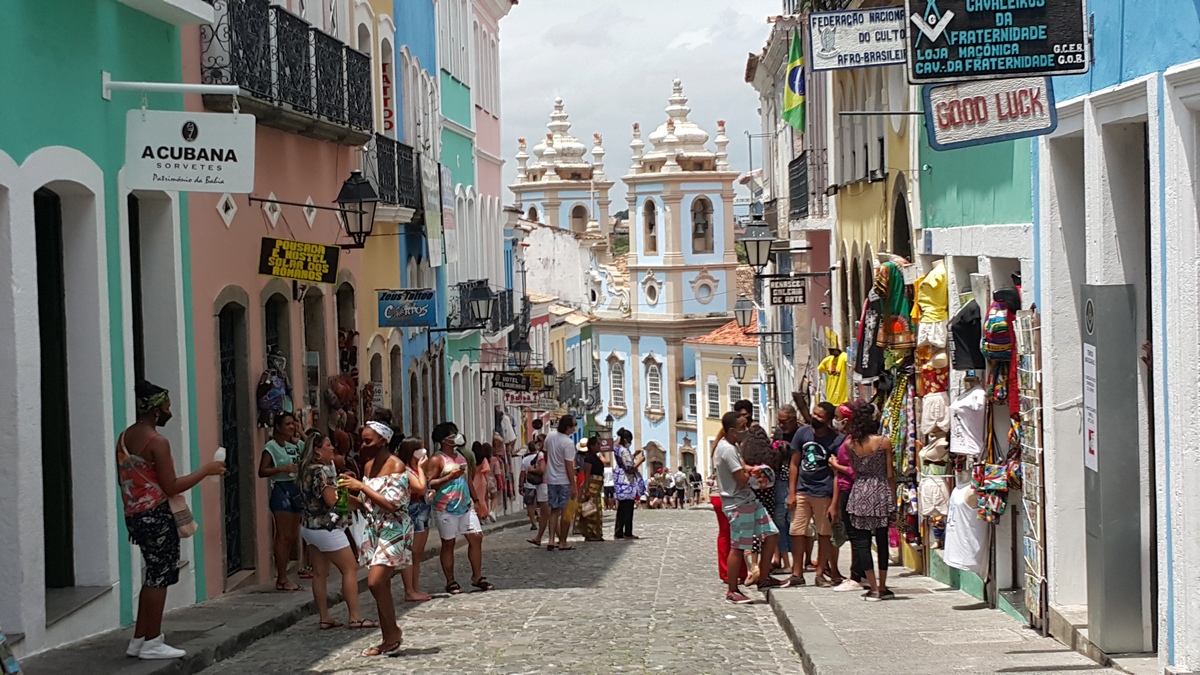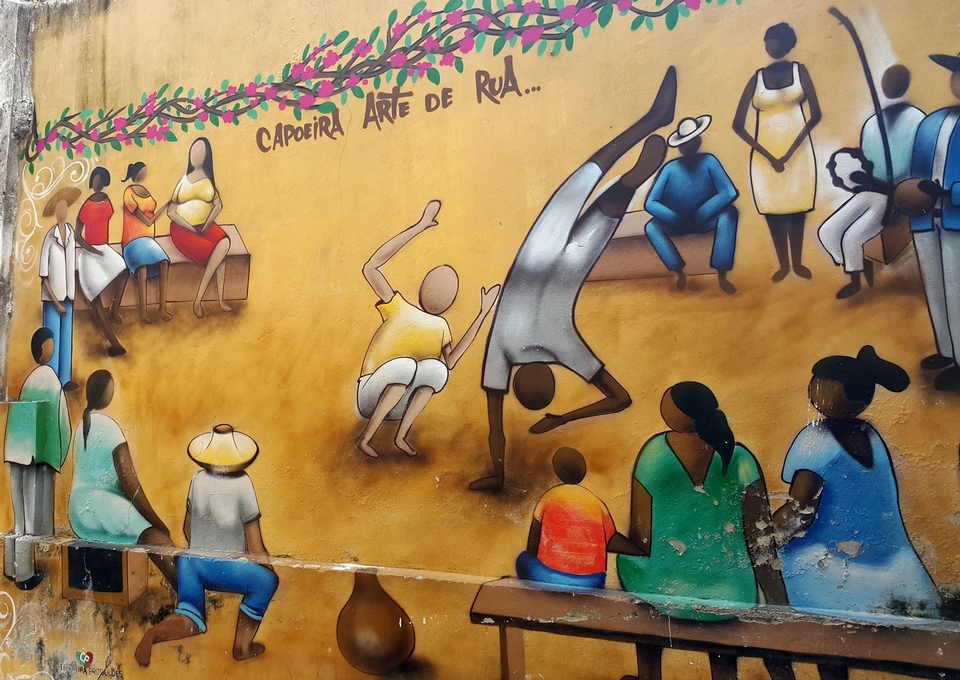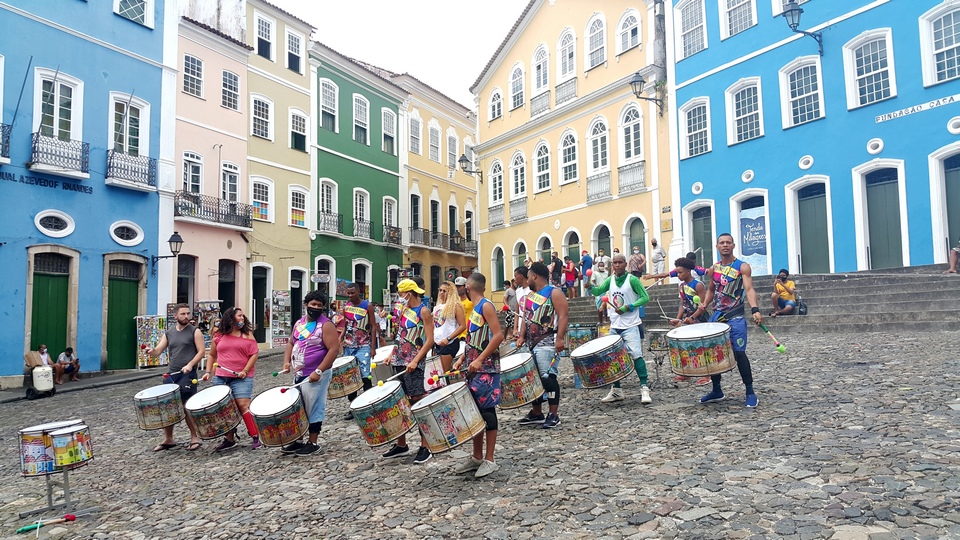TRAVELOGUE
by Dragan Nikolić

If you are wondering where slavery was truly abolished in Brazil and where samba, capoeira, and the famous carnival originate from, Salvador is most likely the answer you are looking for.
Before going to Salvador (Salvador de Bahia, Bahia, Brazil), I spent a few days in Sao Paulo, where one hot morning, I met Marcelo, whom I also met a few years ago in Lisbon. In the typical Brazilian fashion, acquaintances are made immediately and easily, so Marcelo and I stayed in touch even though we met by chance sitting next to each other at a fado dinner in a shoebox-sized restaurant.
It didn’t take long for him to invite me to come to Brazil, and if it weren’t for the coronavirus, I would have been his guest during my stay in Sao Paulo. I told him that morning over an excellent Brazilian coffee in Koreatown that I was soon leaving for Salvador and then for Rio. He was enthusiastic about my planned trip and told me to prepare for the unexpected when I go to Salvador because it is a really special city.
I did not reveal to him then that I had been preparing to come to this city for some time in the best possible way – by reading “Tent of Miracles” (“Tenda dos Milagres”, 1969) by Jorge Amado – and that nothing in Salvador can surprise me after reading that novel. Amado is worshipped in Salvador and almost has the status of an orisha, a deity that is only second to the supreme being called Olorun in the new Yoruba religion that originated in Salvador.
Amado is worshipped in Salvador and almost has the status of a deity called orisha
There is not a person in Salvador, regardless of their age, who does not know who Jorge Amado is and who does not have the deepest respect for him. This Brazilian writer, one of the most translated novelists in the world, is a true son of Bahia, just like his character Pedro Archanjo, after whom a square in Pelourinho is named.

I realized even before arriving in Salvador that not a word can be written about this city without mentioning Pedro Archanjo and his adventures. Speaking about his life, Amado presents us with a colourful and cheerful chronicle of this former capital of colonial Brazil at the turn of the century, not long after slavery was officially abolished in Brazil.
I would not like to stir up a controversy about the origin of samba, but I tend to believe Amado’s stories rather than the official history of this Afro-Brazilian musical direction, which links its origin to Rio de Janeiro. Salvador has the largest percentage of the black population in Brazil, so it makes sense that samba originated there. It has strong ties to Africa, where the Brazilian blacks (Afro-Brazilians) originate from. Today, this city is a fantastic example of racial unity and tolerance. The feeling of unity and all people of all colours being on the same side, while all state systems are on the other, is very strong here.
However, that’s not how it used to be. Black people, sons, and daughters of Bahia had to organize themselves in secret carnival groups in the late 19th century to spread their voices through the streets of Salvador. For ethnic and social reasons and in order to protect the family unit, the authorities at the time banned “this immoral, lewd activity”, which is how they viewed the music of African-Brazilians inspired by the local religions. The leaders of those secret carnival groups carried their war cries through the narrow streets of Pelourinho, which, as Amado says, “gave rhythm to the black people’s dance who escaped from sugar mills, hounds and their masters, never to be slaves again”.
The feeling of unity and all people of all colours being on the same side, while all state systems are on the other, is very strong here
Black people, sons and daughters of yesterday’s slaves, thus built the foundations of Bahia with music born from the rebellion against the colonial, white, and intolerant government, giving Bahia not only samba and capoeira but also something even more important, a religious-philosophical view of the world called Candomblé. This syncretic religion is a fusion of the Yoruba religion from West Africa, more precisely from Nigeria, and Western Christianity brought with them by the pious Portuguese.
And this is how “Tenda dos Milagres” or “Tent of Miracles,” was born. This title best describes Salvador in all its colourfulness and rhythm. The city is the forerunner of Brazilian carnivals as we know them today. Of the famous one that everyone in the world knows about, which takes place every February in Rio, the one in Salvador is both older and more authentic and, if Amado is to be believed, it was created before the end of the 19th century, not long after the abolition of slavery.
Unlike Rio or Sao Paulo, which enjoy all the freedoms, Salvador can boast of having conquered its freedom
You’ll be hard-pressed to see or experience much of this in Salvador today. As one of the most popular tourist destinations in Brazil, this city has also become commercialized, but its streets, more precisely the cobblestones of Pelourinho, still preserve the spirit of freed slaves. With some foreknowledge and remembering Amado’s words, its alleys will reveal to you a secret carnival group that pumps blood into the veins of a body wounded by modern whips and contemporary capitalist slavery.

The main town square in the Upper City is called Pelourinho, which means “place of scourging”. Black people/slaves built their church there in the 18th century – a beautiful bright blue building. In the centre of the triangular square today, just like in the past, various musical groups, perhaps no longer secret but certainly still rebellious, are drumming, moving the crowd to dance in the rhythm of freedom. In the same square, Michael Jackson and a group of drummers recorded the music video for his song “They Don’t Care About Us” with a very clear message.
Many capoeira schools are located in the Upper City, and if you’re lucky, you can even see them on the streets. However, the central place is occupied by the big blue house on top of the hill where the Foundation Casa de Jorge Amado (Fundação Casa de Jorge Amado) is located. It has a café, a research centre, and a small museum where the covers of all Amado’s books, translated into various languages, are exhibited.
The main town square in the Upper City is called Pelourinho, which means “place of scourging”
Although much of the famous history of Salvador is only a memory or a story today, I can definitely agree with Marcelo that Salvador is a very special city. Unlike Rio or Sao Paulo, which enjoy all the freedoms, Salvador can boast of having conquered its freedom. If you are wondering where slavery was truly abolished in Brazil and where samba, capoeira, and the famous carnival originate from, Salvador is most likely the answer you are looking for. Rio will forgive me for saying this.